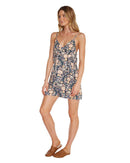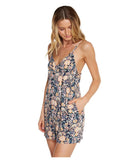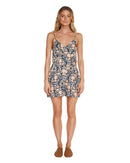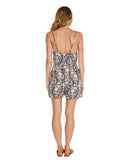Description
SKIFORCE RETURNS POLICY
RETURN FORM
We are confident in our products and our sales staff to make sure you end up with the best possible products. If you have any questions on products please give us a call or send us an email and we are happy to answer your questions so that you can make a more informed decision.
Even with the best help you can sometimes end up with the wrong size, as we are a local, independently owned store and do not offer ‘change of mind’ refunds (this includes incorrect sizing) however we're happy to offer you a store credit which lasts up to 3 years subject to the following conditions
- Returned within 30 days from the date of purchase (or date of delivery for online orders).
- Proof of purchase included
- The item/s must be sent back in the condition you received it and with the original box and/or packaging in resalable condition, including manufacturer tags where applicable. It is the customers responsibility to ensure all returned items are delivered to Skiforce Australia in their original condition.
If you feel that your gear is eligible for a warranty evaluation by the manufacturer due to defect in its materials or workmanship, contact us and we can walk you through the appropriate steps. Please include any photos of the problem so we can expedite the process. Find out more on our warranty page.
RETURNS & EXCHANGES
Sometimes you need to exchange a product for something else—it happens.
Making a return is easy. Please follow the steps below to make the process quick and easy for everyone.
- Fill out & print the following form: RETURN FORM. If you are unable to print the return form, a handwritten note with all requested information will suffice.
- Take the time to carefully package your returns. It is the responsibility of the customer to pay costs related to the repair of returned items damaged in shipping due to improper packaging.
- If returning a product in its box, please wrap the box to protect it prior to taping and avoid attaching shipping labels directly to the box. Failure to do so may incur a fee or a reduced value in your store credit.
- Send parcel to the address labelled on the return form (Attach return form, once filled out, to the outside of parcel)
- Once we receive the item via post we will contact you to confirm a change of product/size or organise a store credit.
Skiforce does not pay for shipping on exchanges and you will be asked to pay the shipping in both directions. Whenever possible we will try to give you the best rates possible and arrangements can be made to bundle your exchange into another order if you are planning on purchasing more products. If you spend an additional $50 we will ship your exchange for free.
You have up to 30 days from the date of purchase to process an exchange but the value of the exchange is based on the current price of the item not the original price paid.
Please send your exchanges to:
Skiforce Australia
Attn: Exchanges and Returns
392 Plenty Rd
Preston VIC 3072
We will call or email you as soon as we receive your items back.
We generally can get exchanges turned around within 24 hours on a regular business day after we have spoken to the customer.
If you have extenuating circumstances we can process a return with a 20% restocking and processing fee as well as the original price of shipping if the shipping was provided for free by us. As with exchanges we also ask you to pay the shipping for the return and it must be processed within 30 days of the original purchase.
Return fees will not be processed if we have made a mistake in an order or you wish to process a successful warranty.
WARRANTY POLICY
Let’s face it, we all ride hard and the toys we play on are bound to take some abuse. Nearly all manufacturers understand this and provide a warranty against defects and workmanship. Each new product sold by Skiforce is covered by the individual manufacturer’s warranty. Please check the manufacturer’s website for information regarding their specific warranty policy. The manufacturer will make all warranty decisions. All return shipping costs are the responsibility of the buyer. As an Australian Wake and Waterski Retailer we can only warranty products purchased from our store and website. Please have proof of purchase at Skiforce available when dealing with any warranties.
STEPS FOR PROCESSING WARRANTIES
Step 1. Determine whether the damage should be covered by warranty. Here are a few things that are NOT covered by warranty:
- Normal wear resulting from standard usage that occurs over time. (chipped topsheet, sun faded topsheet, etc)
- Damage resulting from contact with objects. (Rails, kickers, logs, stumps, little kids, skiers, etc.)
- Damage to product resulting from improper care or unnecessary roughness. (throwing it around on the bank, product flying off of board racks, etc)
- Parts, hardware, accessories that were lost or have gone missing AFTER receiving your shipment.
Step 2. Email us about your warranty and include CLEAR and detailed pictures explaining the problem. Blurry pictures will not be accepted.
If you have any questions, don’t hesitate to give us a call. We want to see you back out on your product as much as you want to use it and try to get you a response within 48 hours of receiving the product.
Step 3. We will contact you with further instruction.
The next step varies by manufacturer and we will provide you with all the details for the next step. If your warranty claim is accepted you will have to ship your product back to us so that we can confirm the warranty with the manufacturer. Return shipping on warranty claims is the responsibility of the buyer. The manufacturer or Skiforce will cover shipping charges on all items replaced or repaired under warranty.
Let us know if you are in a rush and would like to pay extra for express shipping on your warranty return.








